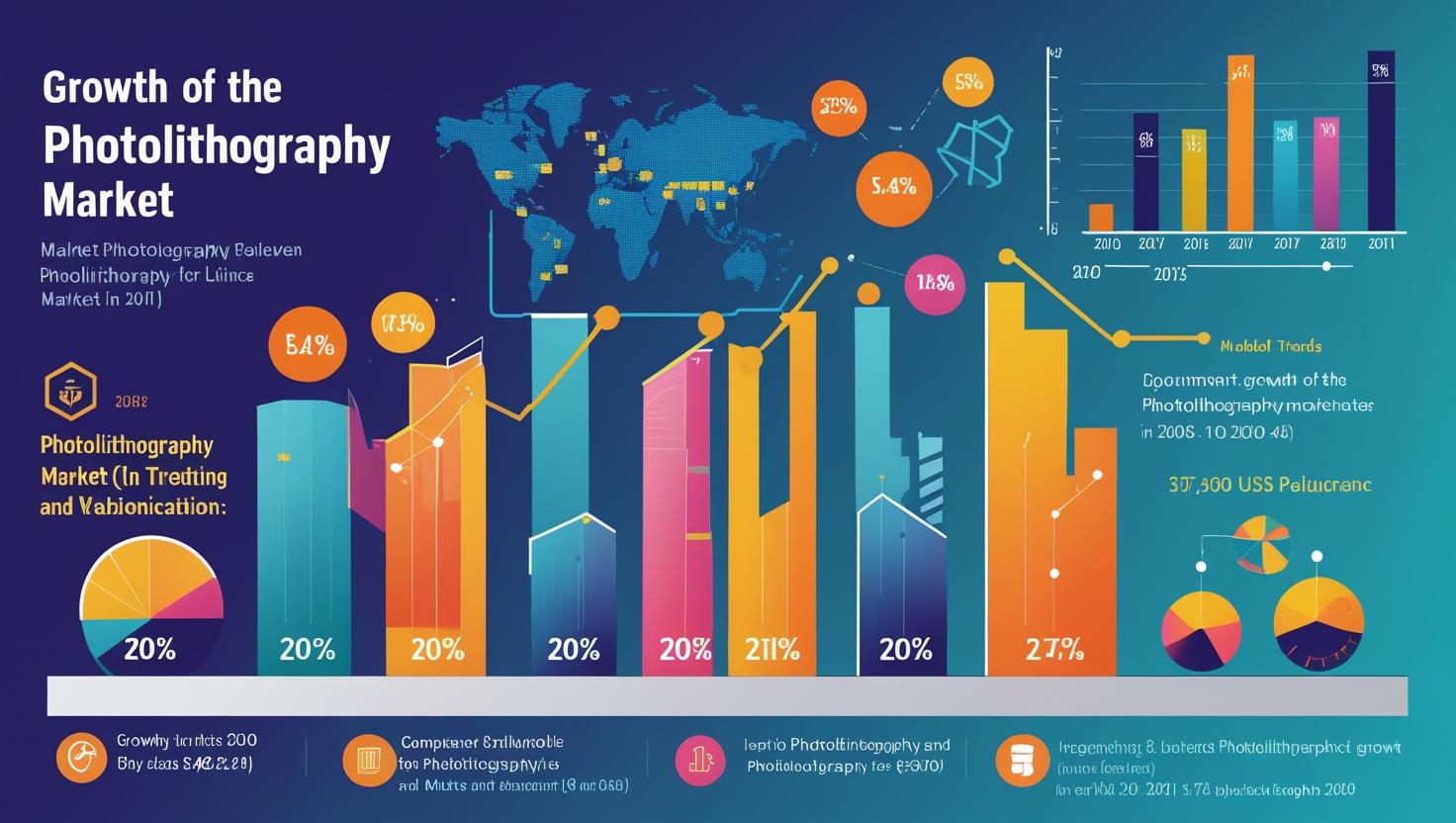The global photolithography market is entering a dynamic growth phase, driven by the exponential increase in semiconductor demand across industries such as consumer electronics, automotive, telecommunications, and artificial intelligence (AI). As the semiconductor industry races to deliver faster, smaller, and more power-efficient chips, photolithography has become the backbone of advanced chip fabrication, especially for nodes at 7nm, 5nm, and below.
With chipmakers ramping up capacity and national governments investing in semiconductor self-reliance, the photolithography market is poised for substantial expansion, both in equipment innovation and strategic deployment.
Photolithography: The Heart of Chip Miniaturization
Photolithography is the critical process used in semiconductor manufacturing to transfer intricate circuit patterns onto silicon wafers. It enables the creation of billions of transistors on microchips, powering everything from smartphones to supercomputers. As Moore’s Law continues to push chip designs toward smaller geometries, photolithography systems must deliver ever-greater precision.
The transition from deep ultraviolet (DUV) to extreme ultraviolet (EUV) lithography has been pivotal. EUV tools, capable of etching features smaller than 10nm with exceptional accuracy, are now central to advanced process nodes used by leading foundries like TSMC, Samsung, and Intel. The increasing reliance on EUV for high-performance computing (HPC) and AI chips places photolithography equipment at the core of the semiconductor value chain.
Download PDF Brochure @ https://www.marketsandmarkets.com/pdfdownloadNew.asp?id=241564826

Rising Semiconductor Demand Powers Equipment Sales
The global chip shortage that began in 2020 underscored the strategic importance of semiconductor manufacturing. Since then, investments have surged across the ecosystem. Photolithography equipment vendors—such as ASML, Nikon, and Canon—are experiencing record order volumes, driven by demand from foundries, integrated device manufacturers (IDMs), and outsourced semiconductor assembly and test (OSAT) providers.
From 5G smartphones and electric vehicles to edge AI devices and cloud infrastructure, semiconductor demand is growing rapidly. This has led to a sharp rise in the deployment of photolithography tools in both high-end fabs and maturing production lines seeking to upgrade their capabilities.
Asia-Pacific at the Forefront of Expansion
The Asia-Pacific region, particularly Taiwan, South Korea, China, and Japan, continues to lead the photolithography market in terms of equipment adoption and manufacturing capacity. Taiwan’s TSMC and South Korea’s Samsung are not only global leaders in chip production but also among the largest consumers of EUV systems. China, on the other hand, is accelerating domestic investments in semiconductor tools to reduce reliance on foreign technologies, which may drive local innovation in mid- to long-term photolithography solutions.
Meanwhile, the U.S. and European Union are investing heavily to revitalize their semiconductor ecosystems. The U.S. CHIPS and Science Act and the EU Chips Act aim to create robust local supply chains, which include funding for advanced lithography capabilities—opening opportunities for photolithography equipment makers worldwide.
Technological Innovation: Beyond EUV
While EUV remains the most advanced lithography technique, the industry is already exploring what’s next. Research is underway in High-NA EUV (high numerical aperture), which offers greater resolution and efficiency for sub-3nm nodes. Additionally, maskless lithography, multi-beam direct-write systems, and next-generation resists are in development to address future challenges in patterning and scalability.
As chip architectures become more complex—like 3D stacking and heterogeneous integration—the photolithography process must adapt to new materials, depths, and performance requirements. This continuous innovation cycle ensures that the market remains technologically vibrant and strategically vital.
Opportunities in the Photolithography Market:
-
Advanced Node Demand – Growing need for 5nm and 3nm chips boosts EUV photolithography adoption.
-
Semiconductor Expansion – Massive investments in fabs globally (U.S., Asia, EU) increase equipment demand.
-
High-NA EUV Development – Next-gen lithography opens new market segments for ultra-high precision tools.
-
AI, 5G, and IoT Growth – Rising chip demand in edge computing and connectivity fuels photolithography use.
-
Localized Supply Chains – Regional semiconductor policies create new photolithography opportunities outside Asia.
Challenges and Strategic Considerations
Despite its strong outlook, the photolithography market faces some challenges There are also geopolitical concerns around equipment export controls and dependencies, particularly as tensions between the U.S. and China affect global supply chains.
Furthermore, the limited number of players with the capability to manufacture advanced photolithography tools, particularly ASML’s dominance in EUV, creates bottlenecks that can affect global chip production timelines.
Conclusion: Photolithography as a Strategic Growth Driver
The photolithography industry stands at the center of the semiconductor industry’s future. As digital transformation reshapes global economies, the demand for faster, smaller, and more efficient chips will continue to accelerate. Photolithography, with its unmatched ability to enable chip scaling, will remain an essential enabler of innovation—from AI and 5G to autonomous vehicles and quantum computing.
With robust investment, cutting-edge R&D, and expanding end-user demand, the photolithography market is not only set for growth—it is poised to become a cornerstone of the modern technological era.
Semiconductor and Electronics Market Research Reports
Frequently Asked Questions (FAQ): Photolithography Market
1. What is photolithography and why is it important in semiconductor manufacturing?
Photolithography is a process used to transfer intricate circuit patterns onto silicon wafers using light, enabling the creation of microchips. It’s a foundational step in semiconductor fabrication and is critical for producing high-performance, miniaturized electronic devices such as processors, memory chips, and sensors.
2 . Why is the photolithography market growing so rapidly?
Growth is driven by the global demand for semiconductors in areas like smartphones, 5G infrastructure, automotive electronics, AI, and data centers. As chip manufacturers move to smaller, more advanced nodes, they rely heavily on cutting-edge photolithography equipment to achieve precise patterning and maintain performance scaling.
3 . What role does EUV play in next-gen chip manufacturing?
EUV (Extreme Ultraviolet) lithography enables the creation of extremely small transistor features, critical for manufacturing chips at 7nm, 5nm, and 3nm process nodes. It reduces the number of patterning steps, increases precision, and supports the continuation of Moore’s Law.
